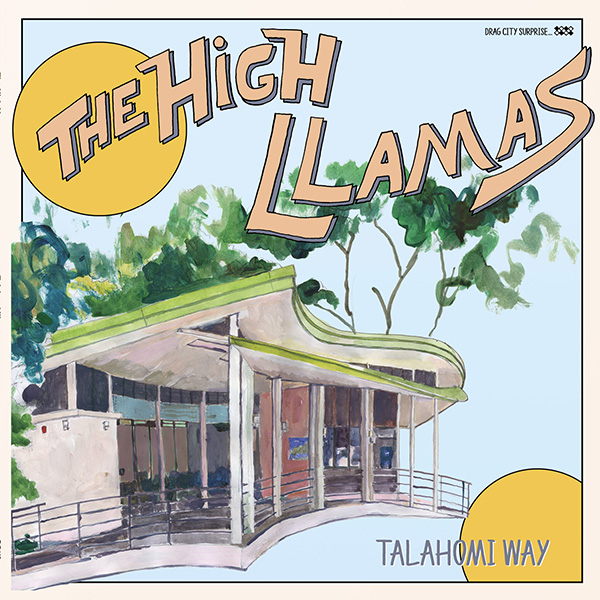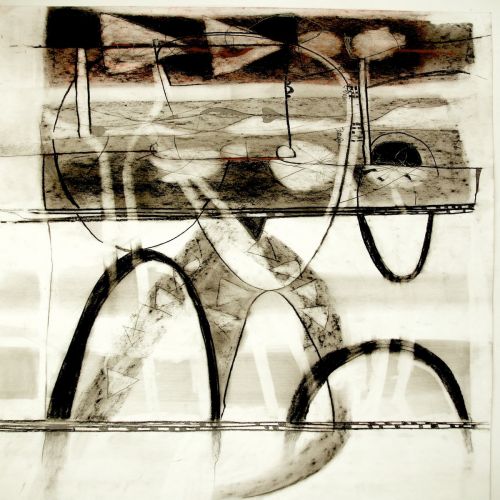At almost exactly the same time as Keiller let off both barrels with his Robinson films, the High Llamas issued two outstanding pieces of work, 1994’s Gideon Gaye and Hawaii in 1996. The latter especially was an era-defining masterpiece, a hypnotic tapestry of woozy, amniotic beauty that intercut burbling electronica and melodies so sharp they could cut through bone. Listening to Hawaii, one was constantly loosing track of time and place, hearing half-familiar fugues weaving in and out, glimpsing moments of pure lyrical genius and generally feeling that things couldn’t really be nearly as bad as everyone thought if this kind of Manna could fall from the Heavens. The album formed the soundscape to my summer holiday in The Lizard in Cornwall that year, and, really, no memory could be more golden. Yet afterwards, the nagging feeling begin to creep in that the period, and that album, became something of a millstone around the band’s neck.
Their subsequent releases, three on V2 (until they were unceremoniously dropped…yeah, thanks for the good years) and three on Drag City (which O’Hagan has explained are personal projects rather than ‘commercial’ releases) somehow always seemed to struggle slightly in comparison. Absolutely none of them were bad albums, far from it, but you just couldn’t stop yourself from wondering whether somehow they’d peaked too soon. Though they gamely went off to explore different musical by-ways, whether Brazilian Tropicalia or ‘60s Motown, they too often felt like a sprinter who had burst over the 100m in a time of 9.60, and had then never quite matched that personal best again, despite years of healthy eating, acetic living and gruelling training. People would say that the key was not to listen too consciously, but give the albums time to penetrate and percolate down. There is much wisdom in that approach, but, come on, this is O’Hagan, I want pop masterpieces that not only pass the whistle test, but kick the living shit out of it. There are vast oceans of mediocrity out there, and I want this man, whom we all know is a musical and lyrical mastermind, to provide me with the antidote to it. Like the Llamas’ last outing, 2007’s Can Cladders, Talahomi Way contains tantalising flashes of that antidote in its purest form, surrounded by others that never quite achieve resolution. All the familiar O’Hagan tropes are here – the riveria, film crews, the sadness of war, hotel lobbies – and the ghost of Ennio Morricone shimmers over the first half of the album, all lovely melodies that could sit over quietly psychedelic and erotic European cult movies. John Phillip Law is probably playing it whilst he fondles a breast at this very moment.”Woven And Rolled” is beautiful and sad – something dreadful has been happening far away, but hey, why worry when you can lose yourself in such sumptuous string arrangements – and the title track makes you want to wear brown leather string-back gloves and drive a red Ferrari Dino to a quiet hotel in a Tuscan hillside with Ingrid Pitt sitting next to you. “I have a reservation. Please have my bags brought in.” On “Fly, Baby Fly” the album truly hits mellifluous musical high gear; Jesus, this is what O’Hagan is capable of, truly monumental pop that makes you realise that he really has managed to rebuild that past, and it really is that good. The outro alone is more gorgeous and delicate than most popsters (or pop stars) manage in an entire career. Followed by one of his patented enigmatically-titled connector interludes, this is Grand Cru O’Hagan. The second half of the album seems to leave Europe and head back by plane to Hokey Americana – paired down lyrically, full of subtle arrangements – like sitting on the porch sharing a jug with Van Dyke Parks in the warm evening breeze. Hungry and tired? Sit down, have a mint julep and plate full of catfish and hush puppies. The gentle closing track, “Calling Up, Ringing Down” leaves us on a soft downstroke, enjoying a pink sky with friends, but also the feeling that underlying this is a dark subtext of we mustn’t speak. Look too closely and the rapture may vanish.Where is Talahomi Way? Perhaps another of those mythical places that O’Hagan has built, and where he can banish the bad and celebrate the good: all sunshine and light, where the darkness can only ever be glimpsed at the peripheries. Talahomi Way is also a great album, one that I suspect will grow and grow with every listen, and yield just a little bit more every time. Plus ça change, plus c’est la même chose, and just as in 1996, we badly need O’Hagan’s carefully-crafted escape routes to allow us to get away from the dreary, uncreative men that run our nation. Talahomi Way might not quite lead all the way to Hawaii, but it’s still a great way to go.
-David Solomons-





One thought on “The High Llamas – Talahomi Way”
well….a really good review……….Sean O Hagan…….pop genius……Talahomi Way………….great imagery………..sweet mood………….As he says “Fly Baby Fly”…….all the way to Talahomi with Brry Adams……………….watch them live
real soon………….nobody makes popular music so good
BK in the UK